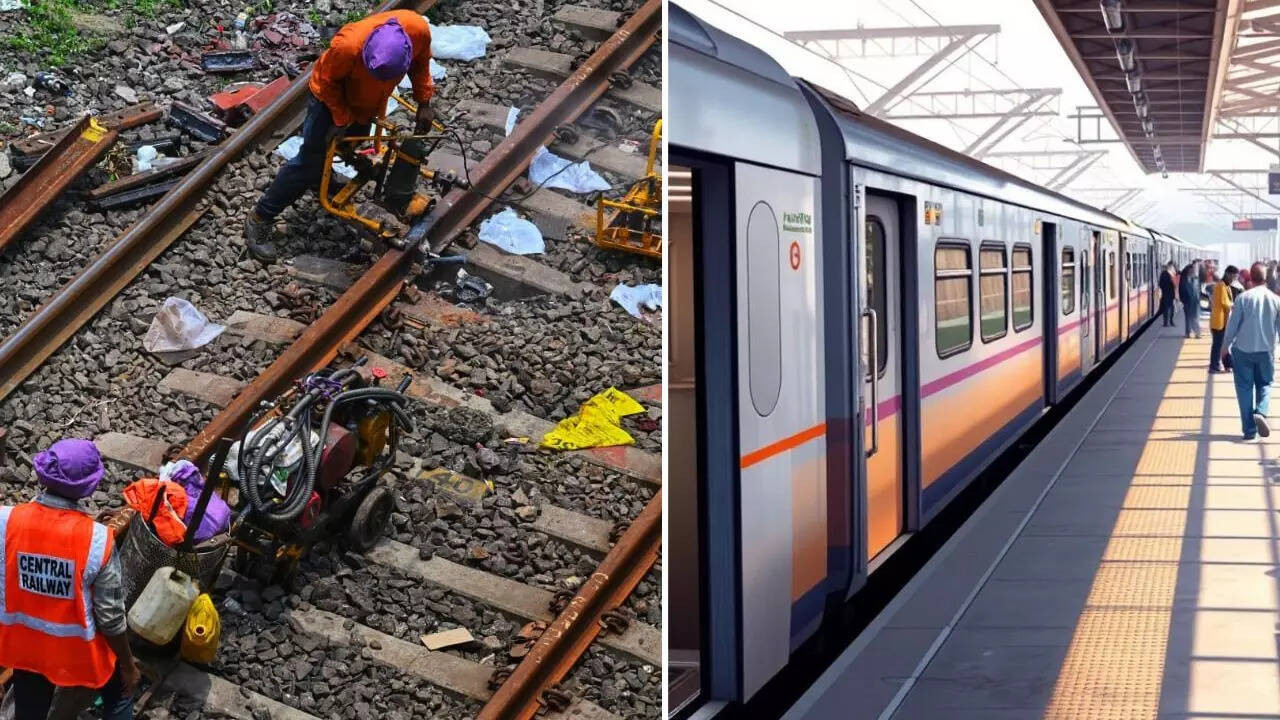Following a tragic incident where passengers fell from an overcrowded local train, Indian Railways has mandated automatic door-closing mechanisms for all new rakes manufactured for Mumbai’s suburban network. Existing rakes will also be redesigned to include this safety feature. This decision aims to prevent accidents caused by open doors and improve passenger safety on Mumbai’s busy local trains.
Mumbai Local Trains: Are Automatic Door Closers the Answer to Crowded Commutes?
Mumbai’s local trains. Just the words conjure images of tightly packed carriages, a relentless human tide, and the daily struggle for survival on wheels. For years, commuters have voiced desperate concerns about overcrowding and the inherent dangers of clinging to doorways, a precarious situation that, tragically, has led to far too many falls. But finally, a glimmer of hope appears on the horizon. The Railways are taking a significant step: installing automatic door closers on some of Mumbai’s most congested train routes.
Now, before we all start picturing a future of seamless, safe commutes, let’s unpack this a bit. The initial reports suggest that these door closers will be fitted on coaches running on the Central and Western lines, the lifelines of Mumbai. This pilot project aims to address a very real and pressing problem: people falling off overcrowded trains. Think about that for a second. Falling off. It’s a horrifying prospect, and the fact that it’s a recurring issue highlights the immense pressure on Mumbai’s transportation infrastructure.
The rationale behind automatic door closers is fairly straightforward. By ensuring doors are closed, the risk of accidental falls should drastically decrease. This isn’t rocket science; it’s basic safety. But the devil, as always, is in the details. And there are several questions buzzing around my head.
Firstly, how robust are these door closers going to be? Mumbai’s local trains endure an insane amount of wear and tear. They are subjected to constant use, extreme weather, and, let’s be honest, a fair amount of abuse. Will these mechanisms withstand the relentless onslaught of the city’s commuter chaos? Will they be prone to malfunctions? Imagine the pandemonium if doors start jamming shut mid-commute! Regular maintenance and robust construction are going to be absolutely critical.
Secondly, how will these door closers impact the flow of people getting on and off the train? Mumbai commuters have perfected the art of the rapid disembark and embark. It’s a ballet of near misses and strategic maneuvering. Will these automatic doors disrupt this carefully choreographed chaos? Will they lead to even more bottlenecks and delays, further frustrating already stressed-out passengers? The timing of the door closures will need to be meticulously calibrated to avoid exacerbating existing congestion.
And thirdly, and perhaps most importantly, will this actually solve the core problem of overcrowding? Automatic door closers are undoubtedly a positive step towards enhancing safety, but they are, essentially, a band-aid solution. They address the symptom, not the cause. The underlying issue is the sheer volume of people trying to squeeze onto a limited number of trains.
To truly tackle this problem, the Railways need to invest in increasing the frequency of trains, adding more coaches, and improving overall infrastructure. Automatic door closers alone won’t magically conjure more space. They will, hopefully, prevent falls, but they won’t alleviate the fundamental discomfort and danger of being sardine-packed into a metal box twice a day.
There’s also the question of public awareness and acceptance. Mumbai commuters are creatures of habit. Any change, even one intended to improve safety, will likely be met with initial resistance. A comprehensive public awareness campaign will be crucial to educate people about how the system works, its benefits, and, importantly, how to use it safely.
We need clear and concise instructions in multiple languages, strategically placed throughout stations and on trains. We also need to address potential concerns about people getting trapped or injured by the doors. Trust is essential. If people don’t trust the system, they won’t embrace it.
However, despite these potential challenges, the initiative deserves commendation. It demonstrates a willingness on the part of the Railways to address a serious safety concern. It’s a concrete action, not just empty promises.
Let’s hope that this pilot project is carefully monitored and that the data collected is used to refine the system and make it as effective as possible. Let’s hope that this is just the first step in a larger, more comprehensive plan to upgrade Mumbai’s local train network and make it safer and more comfortable for everyone.
Ultimately, the success of this initiative hinges on careful planning, robust implementation, and a genuine commitment to addressing the root causes of overcrowding. Automatic door closers are a good start, but they are not the finish line. The journey to a safer and more efficient Mumbai local train system is just beginning. It’s a journey worth taking, for the sake of the millions who depend on these trains every single day.
📬 Stay informed — follow us for more insightful updates!







